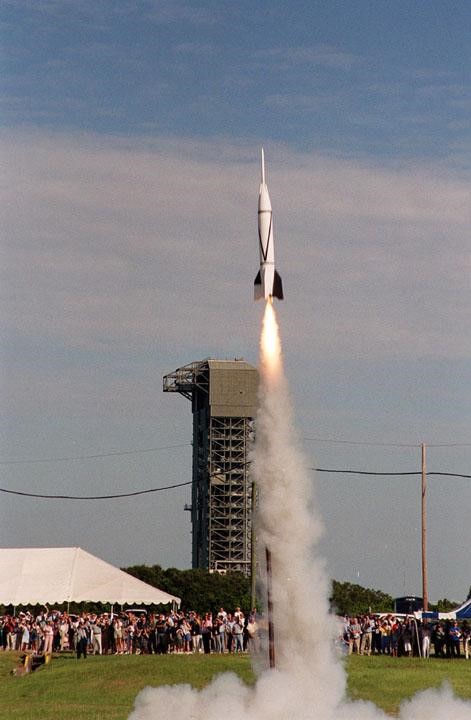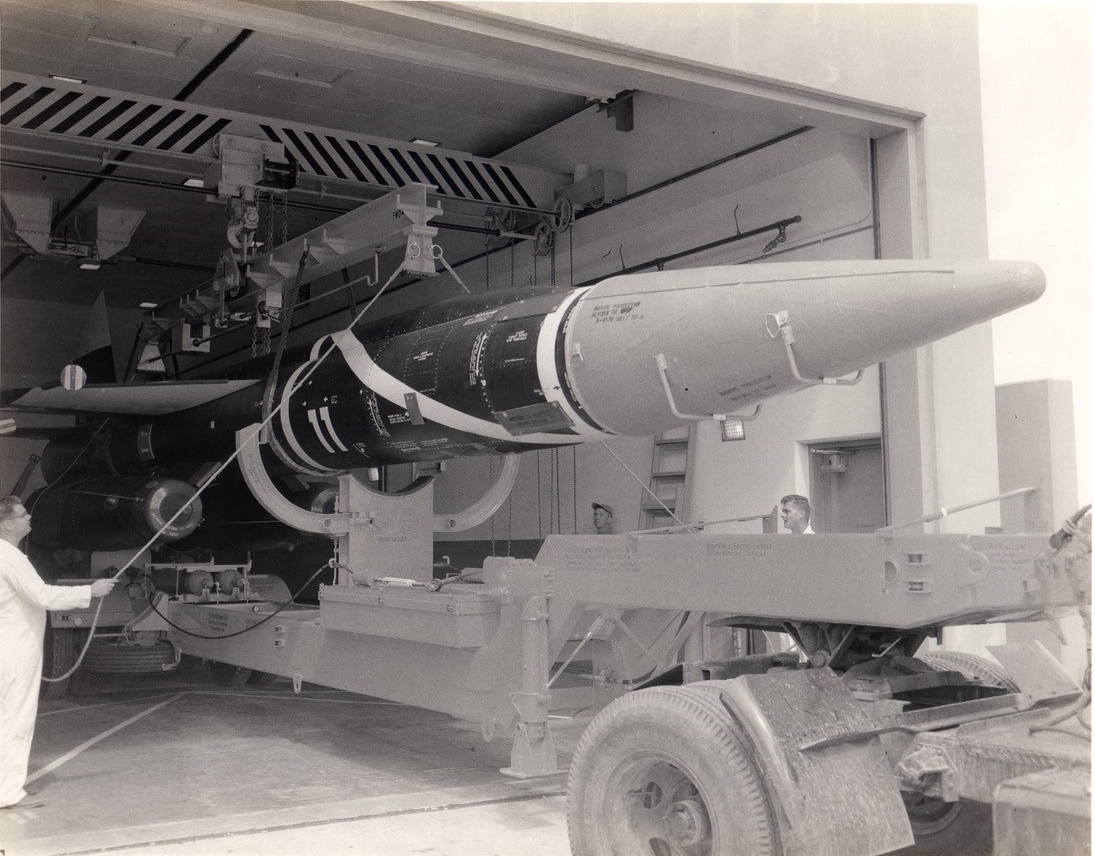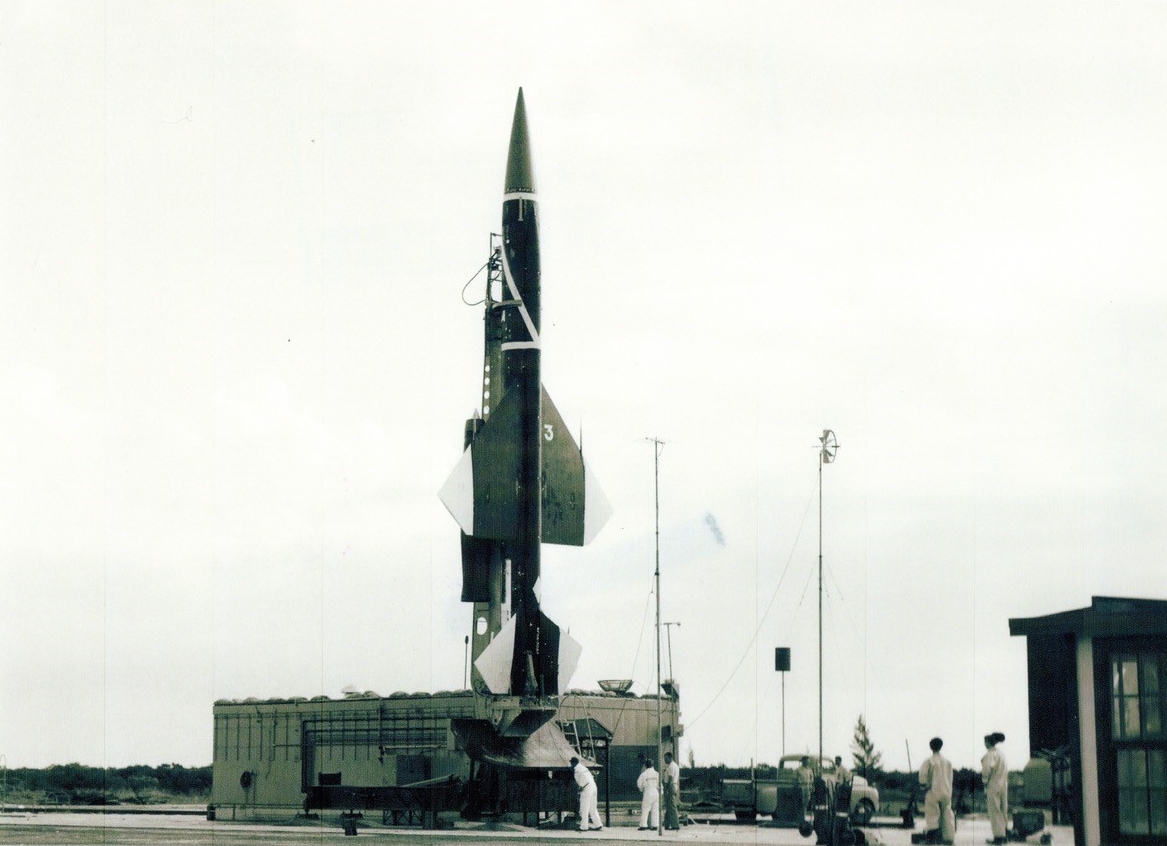LAUNCH COMPLEX 3/4 FACT SHEET
By Cliff Lethbridge
SEE ALSO: SPACELINE COMMEMORATES THE FIRST ROCKET LAUNCH FROM CAPE CANAVERAL
MORE PHOTOS:

Aerial View Of Launch Complex 3/4 Circa 2018
LAUNCH COMPLEX 3/4
Configuration: Single Blockhouse, Three Launch Pads
LAUNCH PAD 3
Current Status: Inactive
First Launch: July 24, 1950
Final Confirmed Launch: January 17, 1958
Number of Launches: 101 Confirmed; Uncertain Number Unconfirmed
Confirmed Vehicles Launched: Bumper-WAC, Lark, Bomarc A, X-17, Polaris FTV, Bumper Scale Model
LAUNCH PAD 4
Current Status: Inactive
First Confirmed Launch: September 10, 1952
Final Confirmed Launch: April 15, 1960
Number of Launches: 24 Confirmed; Uncertain Number Unconfirmed
Confirmed Vehicles Launched: Bomarc A, Redstone, Matador, Bomarc B
LAUNCH PAD 4A
Current Status: Inactive
First Confirmed Launch: September 3, 1958
Final Confirmed Launch: January 27, 1959
Number of Launches: 3 Confirmed; Uncertain Number Unconfirmed
Confirmed Vehicles Launched: Bomarc A
Launch Complex 3/4 was part of the original four flat launch pads built as the first launch pads on geographic Cape Canaveral. It was built at a cost of about $1.4 million, including two launch pads and a single blockhouse serving both pads. Construction of Launch Pad 3 began on May 9, 1950, in support of upcoming Bumper launch activity, including a temporary wooden blockhouse.
Launch Pad 3 was the site of the very first rocket launch from Cape Canaveral, that of Bumper #8, on July 24, 1950 followed by the launch of Bumper #7 on July 29, 1950. In subsequent years the pad supported a number of diverse programs. Following the Bumper launches, the complex underwent some renovation and was accepted by the Air Force on November 19, 1951, with inclusion of a permanent cement blockhouse. Work on Launch Pad 4 began on September 5, 1951 with acceptance by the Air Force in 1952.
Launch Pad 4 was first used in support of the Bomarc winged missile program. Launch Pad 4 was eventually extended to the east in support of the Redstone missile program. This addition included a rail-based mobile service tower, which could move under its own power. This was the first such service tower on Cape Canaveral. Launch Pad 4 was also extended to the south, where a fixed shelter was built for the Bomarc program. The fixed shelter could split apart under its own power, thus exposing a Bomarc missile hidden within.
Launch Complex 3/4 was modified to support tethered aerostat balloon programs from September, 1983 to July, 1989. A large, circular cement pad was built to the south of the complex. The Bomarc shelter was converted into office and support space. The complex is currently in a remarkable state of preservation, with the launch pads and Bomarc shelter still accessible. The blockhouse is currently not accessible for safety reasons but has been preserved. The concrete foundation of the original Bumper wooden blockhouse was unearthed by volunteers of the Air Force Space and Missile Museum in 1998 and has been preserved.

Launch Complex 3/4 Circa 2020

Launch Complex 3/4 Blockhouse Circa 2020

Launch Of Bumper #8 Scale Model From Launch Pad 3 Vicinity July 24, 2000

Matador Missile On Launch Pad 3 Circa 1960

Bomarc Missile At Launch Pad 4 Circa 1958

Bomarc Missile From Launch Pad 4A Circa 1958

Bomarc Missile From Launch Pad 4A Circa 1958

Polaris FTV On Launch Pad 3 Circa 1957

Bomarc Missile On Launch Pad 4 Circa 1957

Polaris FTV On Launch Pad 3 Circa 1957

X-17 On Launch Pad 3 Circa 1956

Launch Complex 3/4 Circa 1956

X-17 On Launch Pad 3 Circa 1955

Redstone Missile On Launch Pad 4 Circa 1954

RV-A-10 On Launch Pad 4 Circa 1953

Redstone Missile On Launch Pad 4 Circa 1953

Redstone Missile On Launch Pad 4 Circa 1953

RV-A-10 From Launch Pad 4 Circa 1953

Bomarc Missile On Launch Pad 3 Circa 1952

Bomarc Missile On Launch Pad 4 Circa 1952

Lark Missile On Launch Pad 3 Circa 1951

Launch Pad 4 Circa 1951

Launch Pad 4 Circa 1951

Blockhouse 3/4 Circa 1951

Blockhouse To Pads 3/4 Tunnel Circa 1951

Lark Missile On Launch Pad 3 Circa 1950


